DASHIKI from Yoruba
This word originated in Nigeria. In Nigeria, it was worn for comfort in the hot climate. In America, it was worn to send a message. That was the situation when the dashiki, and the Yoruba name for it, were imported into the English language in America in the late 1960s.
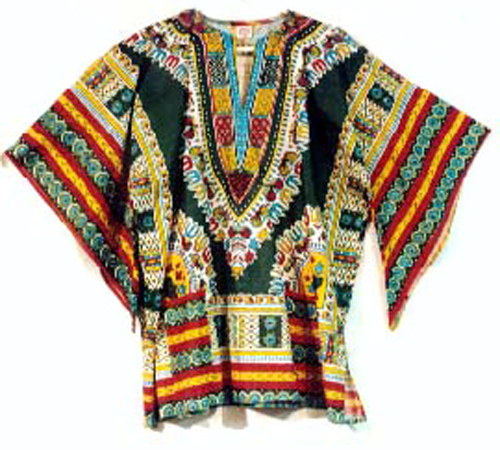
The dashiki rebelled against men’s fashions of the day: brightly colored instead of drab, loose instead of tight, worn outside the pants instead of tucked in. It could be worn defiantly on occasions that normally would call for a coat and tie.
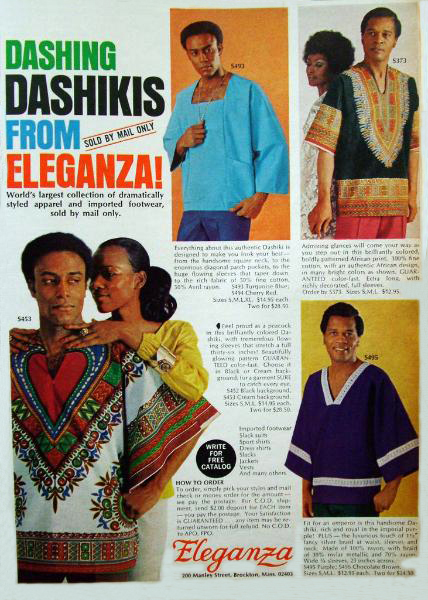 The dashiki was introduced as a way to protest society’ s disrespect for Blacks. It was a symbol of affirmation, standing for “Black is Beautiful,” a return to African roots, and insistence on full rights in American society. Marion Berry, later to become mayor of Washington, D.C., was then one of the rebels leading the “Free DC Movement” to gain voting rights for the mostly Black residents of Washington. Sam Smith, editor of The Progressive Review, recalled that in those days the press would describe him as “dashiki-clad Negro militant Marion Barry.” The 1960s were the hippie era, too, and whites in the counterculture sometimes adopted the dashiki for its rebellious symbolism as well as its anti-mainstream fashion statement.
The dashiki was introduced as a way to protest society’ s disrespect for Blacks. It was a symbol of affirmation, standing for “Black is Beautiful,” a return to African roots, and insistence on full rights in American society. Marion Berry, later to become mayor of Washington, D.C., was then one of the rebels leading the “Free DC Movement” to gain voting rights for the mostly Black residents of Washington. Sam Smith, editor of The Progressive Review, recalled that in those days the press would describe him as “dashiki-clad Negro militant Marion Barry.” The 1960s were the hippie era, too, and whites in the counterculture sometimes adopted the dashiki for its rebellious symbolism as well as its anti-mainstream fashion statement.
The militancy of the 1960s has faded, but the dashiki has not. It still serves as a symbol of Africanness within American culture, as in the celebration of Kwanzaa. It is also sometimes an ingredient of high fashion or just a colorful, comfortable shirt for all occasions. Yoruba, from the Atlantic-Congo and Benue-Congo branches of the Niger-Congo language family, is the official language of southwestern Nigeria, spoken by nearly twenty million people there. One other word English has acquired from Yoruba is iroko (1890), a tree whose wood is resistant to insects and is often used as a substitute for teak. http://www.answers.com/topic/dashiki
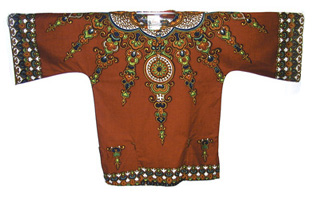 The dashiki is a colorful men’s garment widely worn in West Africa that covers the top half of the body. It has formal and informal versions and varies from simple draped clothing to fully tailored suits. Traditional female attire is called a caftan, or kaftan. A common form is a loose-fitting pullover garment, with an ornate V-shaped collar, and tailored and embroidered neck and sleeve lines.
The dashiki is a colorful men’s garment widely worn in West Africa that covers the top half of the body. It has formal and informal versions and varies from simple draped clothing to fully tailored suits. Traditional female attire is called a caftan, or kaftan. A common form is a loose-fitting pullover garment, with an ornate V-shaped collar, and tailored and embroidered neck and sleeve lines.
The dashiki found a market in America during the Black cultural and political struggles in the 1960s. A prototype was developed in 1967 by Jason Benning, Milton Clarke, Howard Davis, and William Smith. These young professionals formed a company called New Breed to produce dashikis. It was located in a 2-room clothing store at 147th Street and St. Nicholas Avenue in the Harlem section of Manhattan.
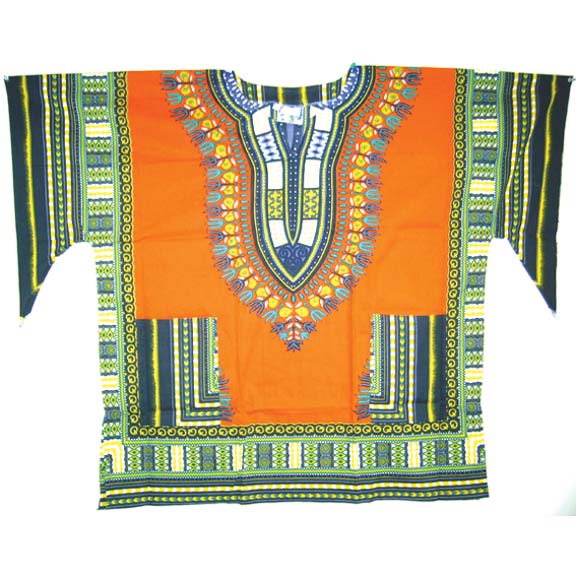 The dashiki was featured in the movies Putney Swope (1969), Five on the Black Hand Side (1973), and the weekly television series Soul Train (1971). Articles on New Breed appeared in Ebony Magazine and the New York Times (4/20/69). Jim Brown, Wilt Chamberlain, Sammy Davis Jr., and Bill Russell were among the well-known Black athletes and entertainers who wore the dashiki on talk shows.
The dashiki was featured in the movies Putney Swope (1969), Five on the Black Hand Side (1973), and the weekly television series Soul Train (1971). Articles on New Breed appeared in Ebony Magazine and the New York Times (4/20/69). Jim Brown, Wilt Chamberlain, Sammy Davis Jr., and Bill Russell were among the well-known Black athletes and entertainers who wore the dashiki on talk shows.
The term dashiki begins appearing in print at least as early as mid-1968: an article by Faith Berry in the New York Times Magazine includes it, on July 7, 1968. Reporting on the 1967 Newark riots in the Amsterdam News on July 22, 1967, George Barner refers to a new African garment called a “danshiki.” “Dashiki” first appeared in the Webster’s New World Dictionary, 1st College Edition 1970/72.
Former District of Columbia mayor and current council member Marion Barry is famous for wearing the dashiki at various times, particularly in the time period leading up to elections. More recently he has donned a modified dashiki that combines the traditional form with a Western-style button-down shirt.
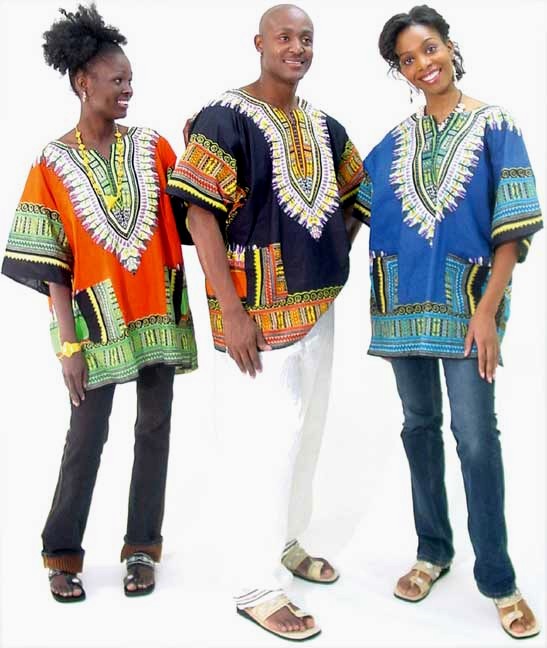

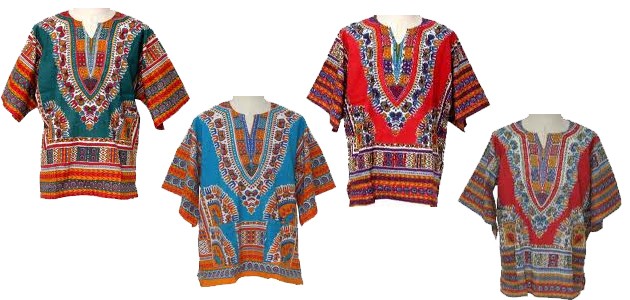
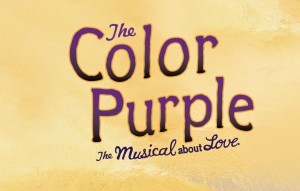
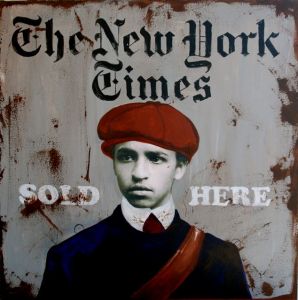
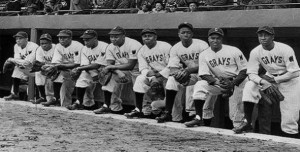

9 Comments
I am going to a 70’s party this weekend and need to know where I can purchase a Dashiki?
i wish to purchase many dashikis for my own interest in my culture and for my way of life…, please inform me where is an official site to purchase
We have several Dashiki’s different styles at great prices!
Peace, your history is incorrect. The Dashiki was introduced to America and the English language by His Royal Highness King Oseijeman Adefunmi who in 1957 started the 60’s black movement and revolution when mounted a white horse and lead a parade from Central Park to Harlem. His brother Prince Henri Umbaji who lived in Detroit at the time was sent to Africa by the Festival of Detroit African Community. As a internationally known artists of ground breaking revolutionary achievements he was chosen to bring back from Africa clothing and accessories he felt would be fit for African-Americans. He began sewing the first dashiki’s at his African art gallery called Kumassi Mart in Detroit. Please he His Highness’ess biography, the one where it states “the dashiki spread across America like wild fire”. There you will find the right and exact truth. Peace.
Shoga is full of it….. everyone knows King Oseijeman was a pedeophile and a scam artist….
@Nancy I am late to the party, but I have something to add. Best place to get a dashiki is http://www.dashikis.net
Asanti!
Who says King Oseijeman was a pedophile and a scam artist? You don’t know what you’re talking about. Sorry.
King Oseijeman was against pedophillia. He created strict laws against it. Contrary to what King Oseijeman’s biography says, it wasn’t King Oseijeman who introduced the dashiki to America, it was his brother Prince Umbaji who went to Africa to bring back African fashions that would appeal to African Americans. King Oseijeman popularized the dashiki across America. I know this because they’re both my uncles and I knew them both personally.
Are there certain designs particular to Cameroon/Congo, Benin/Togo, Ivory coast/Ghana?